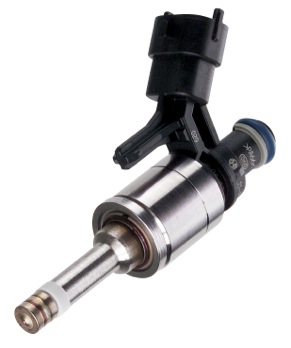BROADVIEW, Ill. – Robert Bosch LLC is broadening its coverage of gasoline fuel injectors for domestic, Asian and European applications with 11 new gasoline direct injector (GDI) part numbers covering 4.1 million new vehicles in operation (VIO) and 12 new gasoline port fuel injector part numbers covering 2.4 million new VIO.
 “Direct injection is one of the most efficient means of achieving combustion in a gasoline engine,” said Stephen Albert, product manager, fuel injection for Robert Bosch LLC. “Injecting a precise amount of fuel directly into the gasoline chamber minimizes fuel waste and lowers CO2 emissions, while still producing excellent power and performance.”
“Direct injection is one of the most efficient means of achieving combustion in a gasoline engine,” said Stephen Albert, product manager, fuel injection for Robert Bosch LLC. “Injecting a precise amount of fuel directly into the gasoline chamber minimizes fuel waste and lowers CO2 emissions, while still producing excellent power and performance.”
According to Albert, “Bosch’s extensive experience as a leading global OE supplier has helped drive its research efforts in advancing and refining fuel system technology.” Bosch is now bringing this advanced OE technology to the aftermarket to ensure technicians can replace a failed part with the same OE part. This assurance is critical especially when servicing a GDI application, as it is a more labor intensive and costly repair compared to port fuel injection. Bosch continually strives to meet technicians’ demands by providing the best part to have the job done once.”
The expanded coverage includes Audi, VW, BMW, Cadillac, Chevrolet, Ford and Infiniti, Mazda, Mercedes-Benz, Mini Cooper and Porsche. These late-model applications can be found in the current Bosch ACES/PIE catalog beginning this month.
With more and more automakers opting for downsizing, the international market for gasoline direct injection systems is steadily growing. In fact, after marking the production of 25 million gasoline direct injectors in 2011, Bosch increased its total output to 50 million units by November 2012. Bosch estimates that by 2015, 18 percent of global new vehicle production will feature gasoline direct injection.













